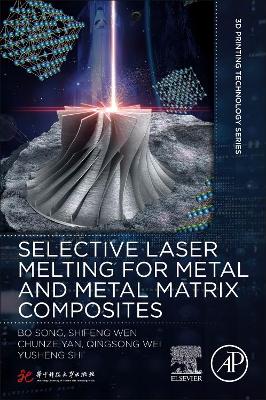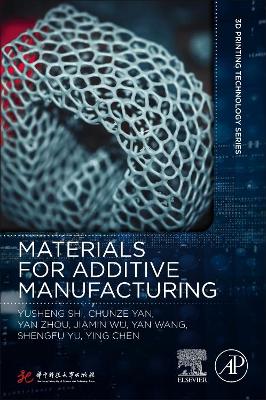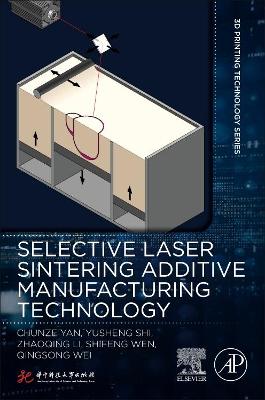Huazhong University Series in 3D Printing Technology Applications
3 total works
Selective Laser Melting for Metal and Metal Matrix Composites
by Song Bo, Shifeng Wen, Chunze Yan, Qingsong Wei, and Yusheng Shi
Published 7 October 2020
Selective Laser Melting for Metal Matrix Composites explains in detail the essential preparation and characterization methods for this technology, and explores a range of innovative applications. The subject covered by this book has been the focus of increasing levels of research both in industry and academia globally. The authors have drawn on their influential cutting-edge research to provide a much-needed guide for those investigating or applying this technology. The novel material preparation methodologies addressed here provide new opportunities to expand the applications of additive manufacturing, particularly in industries such as aerospace, medical, automotive, and electronics. These applications, as well as the theory behind this technology are also covered in this book, providing a complete guide which is appropriate for engineers in industry as well as researchers.
Materials for Additive Manufacturing
by Yusheng Shi, Chunze Yan, Yan Zhou, Jiamin Wu, Yan Wang, Shengfu Yu, and Chen Ying
Published 12 February 2021
Materials for Additive Manufacturing covers the materials utilized in the additive manufacturing field, including polymers, metals, alloys and ceramic materials. A conceptual overview of the preparation and characterization of the materials and their processing is given, beginning with theoretical aspects that help readers better understand fundamental concepts. Emerging applications in medicine, aerospace, automotive, artwork and rapid manufacturing are also discussed. This book provides a comprehensive overview of materials, along with rapid prototyping technologies.
Selective Laser Sintering Additive Manufacturing Technology
by Chunze Yan, Yusheng Shi, Li Zhaoqing, Shifeng Wen, and Qingsong Wei
Published 23 November 2020
Selective Laser Sintering Additive Manufacturing Technology is a unique and comprehensive guide to this emerging technology. It covers in detail the equipment, software algorithms and control systems, material preparations and process technology, precision control, simulation analysis, and provides examples of applications of selective laser sintering (SLS).
SLS technology is one of the most promising advances in 3D printing due to the high complexity of parts it can form, short manufacturing cycle, low cost, and wide range of materials it is compatible with. Typical examples of SLS technology include SLS manufacturing casting molds, sand molds (core), injection molds with conformal cooling channels, and rapid prototyping of ceramic and plastic functional parts. It is already widely used in aviation, aerospace, medical treatment, machinery, and numerous other industries.
Drawing on world-leading research, the authors provide state of the art descriptions of the technologies, tools, and techniques which are helping academics and engineers use SLS ever more effectively and widely.
SLS technology is one of the most promising advances in 3D printing due to the high complexity of parts it can form, short manufacturing cycle, low cost, and wide range of materials it is compatible with. Typical examples of SLS technology include SLS manufacturing casting molds, sand molds (core), injection molds with conformal cooling channels, and rapid prototyping of ceramic and plastic functional parts. It is already widely used in aviation, aerospace, medical treatment, machinery, and numerous other industries.
Drawing on world-leading research, the authors provide state of the art descriptions of the technologies, tools, and techniques which are helping academics and engineers use SLS ever more effectively and widely.


